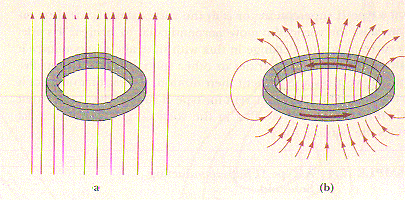Resistance
Measuring the Resistance for DC
To measure the resistance in a superconductor with DC
current, start a current flowing in a closed superconducting ring and then
see if there is any decay in the current after a long period of time. Unfortunately,
there is no way of directly measuring the current without having an effect
on the circuit itself. That is why in order to measure the current flow,
the magnetic field that the circulating current produces and see if it decays
with time; this is done because the measurement of the magnetic field does
not draw energy from the circuit.
Quinn and Ittner found that in this experiment, the magnetic field
decayed by less than two percent in seven hours. From this they were able
to calculate the resistivity of the superconducting metal at less than 4e-25
ohmmeters; the decay time exceeds 100,000 years. The metal that an electron
travels through is modeled as a three-dimensional ion lattice with freely
moving electrons.
Because there is no resistance in the circuit, there
is no electric field. There is no electric field because in DC, the electrons
are not accelerating. By Faraday’s Law, this means that there cannot be
a change in the magnetic flux in this type of circuit.
The Resistance under AC Conditions
If the current in the superconductor is changing, or
AC, an electric field must be present in the superconductor to accelerate
the electrons. This electric field is caused by electrons moving perpendicular
to the flow of the rest of the current. These electrons then collide the
other electrons and this creates resistance. Therefore, AC current in a superconductor
creates resistance. Zero resistance can only occur with DC current, which
does not require an electric field.

